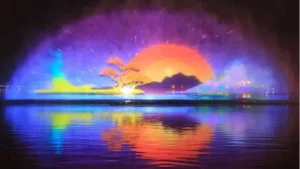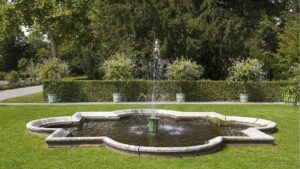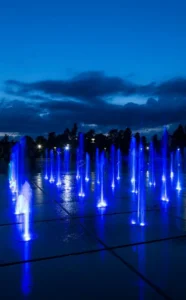- Product Knowledge
Outdoor Pool Lighting vs Indoor Pool Lighting
Effective lighting plays a crucial role in enhancing the overall design of swimming pools. Optimal lighting not only elevates the swimming experience but also ensures safety. In this comprehensive analysis, we delve into the distinctions between outdoor and indoor pool lighting. Our discussion encompasses factors like the impact of ambient light, standards for product quality, variations in light color and intensity, as well as considerations regarding lighting layout.
Influence of Ambient Light
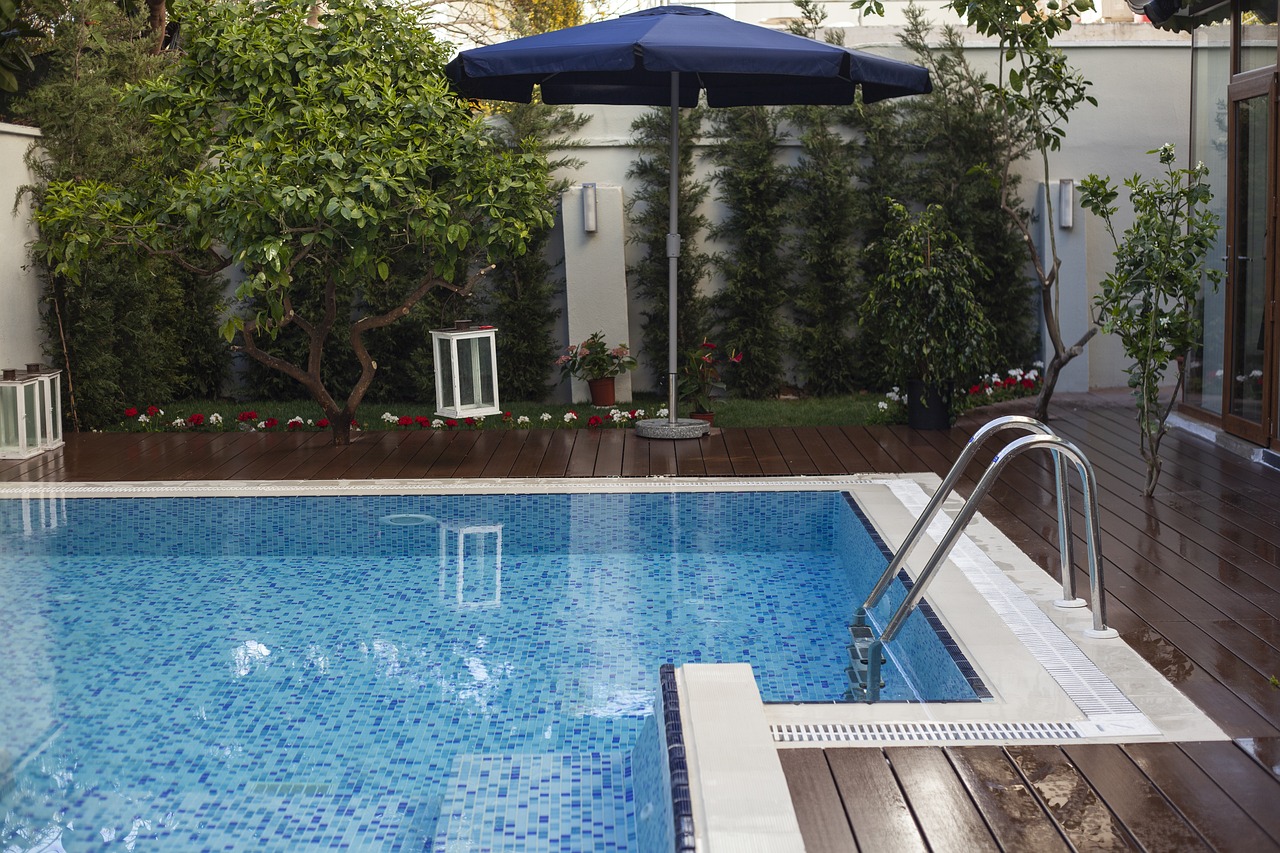
Outdoor Pool Lighting: Embracing Natural Elements
Outdoor pool lighting must contend with the ever-changing influence of natural ambient light. From the vibrant glow of the sun during the day to the soft hues of twilight, outdoor pools are subject to varying light conditions. Designing outdoor lighting systems requires careful consideration of these elements to enhance the pool’s aesthetic appeal while ensuring safety for swimmers.
Incorporating outdoor lighting that complements the natural surroundings can create a captivating ambiance. Warm-toned lights can evoke a sense of tranquility during twilight hours, while strategically placed LED lights can accentuate landscaping features, creating an inviting atmosphere for evening gatherings.
Indoor Pool Lighting: Controlled Illumination
Indoor pool lighting offers greater control over environmental factors compared to outdoor settings. Shielded from external light sources, indoor facilities provide an ideal canvas for customized lighting schemes. Pool owners can create tailored lighting designs to suit their preferences, regardless of the time of day or weather conditions.
With indoor pool lighting, the focus shifts from harmonizing with natural light to creating a controlled environment conducive to relaxation and recreation. Adjustable lighting fixtures can simulate daylight or mimic the ambiance of a starlit sky, providing swimmers with an immersive experience regardless of external factors.
Product Quality Requirement
Outdoor Pool Lighting: Durability and Weather Resistance
Outdoor pool lighting fixtures must withstand exposure to the elements, including sunlight, moisture, and fluctuating temperatures. Choosing durable and weather-resistant fixtures is essential to ensure reliable performance and longevity. High-quality LED fixtures constructed from marine-grade materials offer superior durability and corrosion resistance, minimizing maintenance requirements and prolonging the lifespan of the lighting system.

Indoor Pool Lighting: Performance and Efficiency
In indoor pool environments, product quality requirements focus on performance and energy efficiency. While not exposed to outdoor elements, indoor lighting fixtures must meet stringent standards to deliver optimal illumination without causing glare or discomfort to swimmers. LED lighting technology is the preferred choice for indoor pool lighting, offering superior performance, efficiency, and longevity. Energy-efficient LED fixtures consume less power than traditional lighting sources, resulting in reduced operating costs and environmental impact.
Light Color
Outdoor Pool Lighting: Setting the Mood
The choice of light color can significantly impact the ambiance of outdoor pool spaces. Warm-toned lights, such as amber or soft white, create a cozy and inviting atmosphere, perfect for evening gatherings or relaxation. Alternatively, cooler-toned lights can evoke a sense of sophistication and modernity, ideal for contemporary pool designs.
Indoor Pool Lighting: Customizable Options
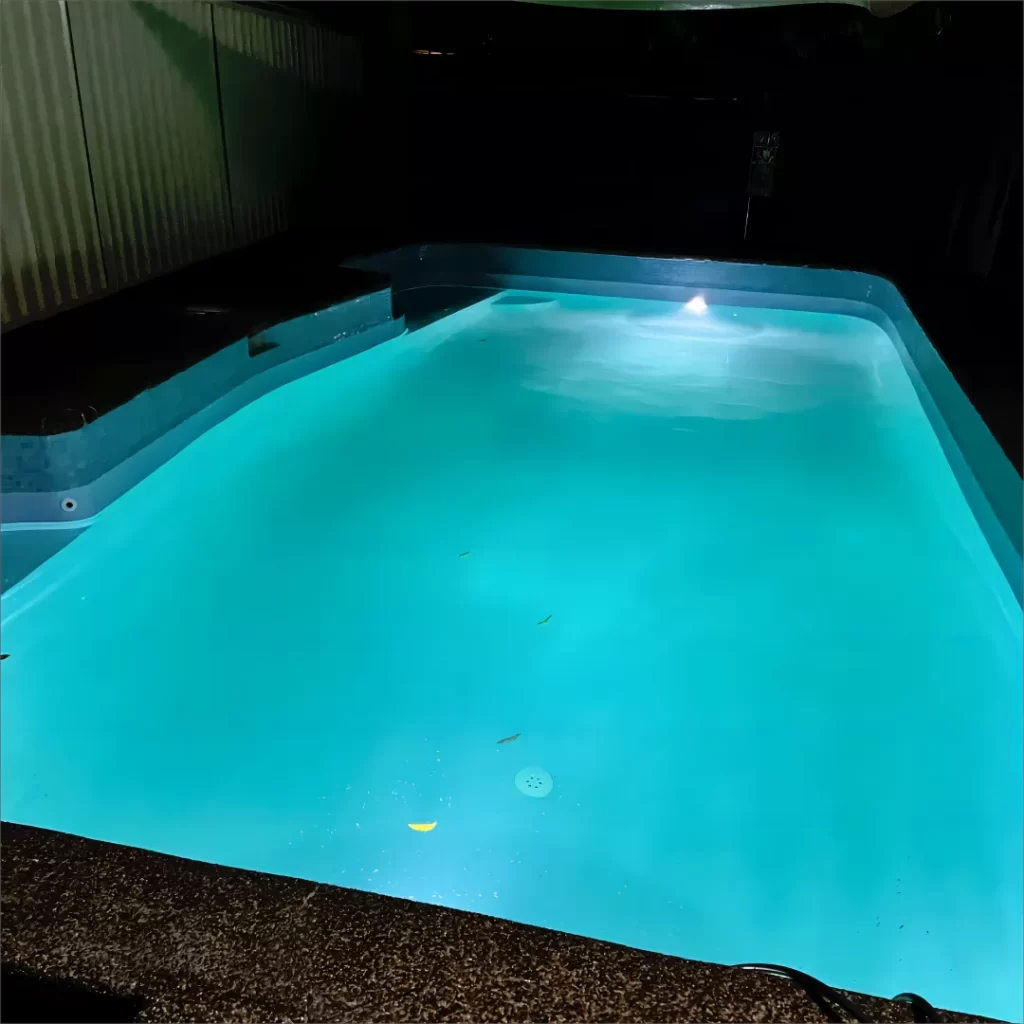
Indoor pool owners have the flexibility to customize light colors to suit their preferences and enhance the overall aesthetic of the space. Whether opting for warm, inviting hues or cool, refreshing tones, the ability to adjust light colors allows for endless design possibilities. LED lighting technology offers a wide range of color options, from subtle pastels to vibrant hues, ensuring that indoor pools can be tailored to reflect the owner’s unique style and taste.
Light Intensity
Outdoor Pool Lighting: Balancing Visibility and Atmosphere
Outdoor pool lighting must strike a balance between visibility and ambiance. Bright, high-intensity lights are essential for ensuring safety and visibility during evening swims. However, excessively bright lights can detract from the overall ambiance, creating a harsh and unwelcoming atmosphere. Adjustable lighting fixtures allow pool owners to customize light intensity according to their needs, providing adequate illumination without compromising on aesthetics.
Indoor Pool Lighting: Tailored Illumination
In indoor pool environments, light intensity can be adjusted to create the desired atmosphere. Whether seeking a bright and invigorating space for morning workouts or a tranquil setting for evening relaxation, indoor pool lighting can be tailored to suit the occasion. Dimmable LED fixtures offer precise control over light intensity, allowing pool owners to create the perfect ambiance for any activity.
Lighting Layout
Outdoor Pool Lighting: Highlighting Features
Outdoor pool lighting layout plays a crucial role in enhancing the overall aesthetic appeal of the space. Strategic placement of lighting fixtures can highlight architectural features, landscaping elements, and focal points around the pool area. Path lights, uplights, and underwater fixtures can accentuate key areas, creating depth and dimension in the outdoor environment.

Indoor Pool Lighting: Enhancing Functionality
In indoor pool settings, lighting layout is designed to enhance functionality and user experience. Evenly distributed lighting ensures uniform illumination throughout the space, minimizing shadows and glare. Task lighting may be incorporated for specific areas such as swim lanes or seating areas, while accent lighting can highlight architectural details or artwork, adding visual interest to the indoor environment.
The lighting products utilized in indoor and outdoor swimming pools share numerous similarities. However, outdoor pools necessitate greater attention to natural and environmental factors. Conversely, indoor pool lighting demands a more tailored and intricate design to optimize installation and lighting efficacy within confined spaces.

